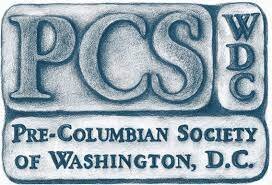The Evolutionary Genomic Dynamics of Peruvians Before, During, and After the Inca Empire by Daniel Harris, PhD candidate, Graduate Program in Molecular Medicine, Institute for Genome Sciences, University of Maryland School of Medicine.
This meeting will be held at the Charles Sumner School, 17th & M Streets, N.W., Washington, D.C.
The meeting starts with refreshments at 6:45 pm and the lecture begins at 7:15 pm
The Andean region of Peru experienced a dynamic pre-Columbian history which culminated with the Inca Empire. Following the Inca, Spanish conquerors ruled Peru for nearly 300 years until Peruvian Independence (1821). The Spanish and early Native American empires greatly impacted modern Peruvian demography and recently genomics provided further insights to these processes.
In this research project, 150 genomes from Native and mestizo populations in Peru were sequenced and an additional 130 were genotyped. The majority of these samples possessed greater than 90% Native American ancestry. Demographic modeling indicates these populations diverged early in Peruvian history, supporting the hypothesis that the New World was peopled rapidly.
Following the initial peopling, Native American populations remained relatively isolated while mestizo populations have evidence of admixture between multiple Native American populations in addition to their Old World admixture. During the Inca Empire, the center of genetic relatedness was based in the Andes but shifted toward toward the coast during Spanish rule. The majority of migration in Peru was in descent of the Andes towards the Amazon and coast. evidence of the Inca and other Andean Empires’ influence on Peru and/or reflective of negative selection pressures on new migrants to the high altitude environment in the Andes
Daniel Harris is a 4th year PhD candidate in the Molecular Medicine Program at the University of Maryland School of Medicine in Dr. Timothy O’Connor’s lab at the Institute for Genome Sciences. The major goal of his research is to apply evolutionary biology and population genetics theory to the study human history, specifically, the peopling of geographic regions and human migration/admixture patterns.
He also studies human history through ancient DNA analysis, which includes the archaic hominins, Neanderthals and Denisovans, as well as more recent anatomically modern human samples. In addition to human history, and the application of Precision Medicine to populations worldwide. He focuses on genetically understudied populations, such as Native Americans, but also works with the Trans-Omics for Precision Medicine Program (TOPMed), which consists of the largest sequenced human data set to date.
Mr. Harris has presented his work at the American Society for Human Genetics, Society for Molecular Biology and Evolution, and the Evolutionary Demography Society. In addition, he presented at the first Annual Molecular Medicine Research Retreat where he won the award for best oral presentation,

